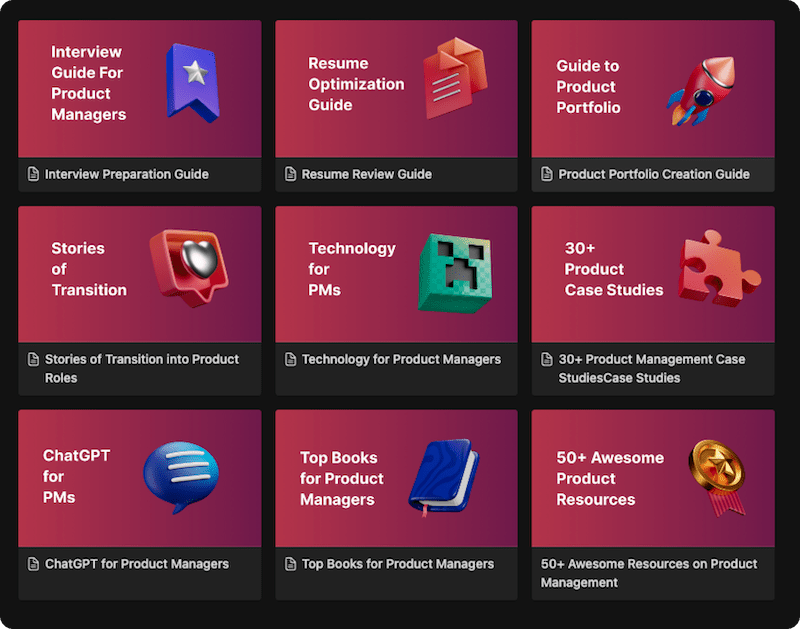Have you ever meticulously planned a Product Roadmap, only to have it derailed by last-minute objections from the head of sales? Or perhaps you’ve felt the frustration of building a feature exactly as specified in the PRD (Product Requirement Document), only to find it misses the mark for the marketing team’s Go-To-Market (GTM) strategy. If these scenarios feel familiar, you’ve experienced the costly and demoralizing impact of misalignment. It’s the friction that grinds projects to a halt, drains budgets, and turns clear objectives into a tangled mess of competing priorities.
The silent force that separates successful product launches from these chaotic failures is Stakeholder Alignment. It’s the art of ensuring every person with a stake in your project—from the executive suite to the engineering pod—shares the same vision and is pulling in the same direction. This guide will demystify this critical skill, transforming you from a mere coordinator of tasks into a true leader who can build consensus, drive clarity, and rally diverse groups around a single, unified goal.
Definition and Origin
The concept of managing stakeholders has been a cornerstone of project management for decades, notably formalized in frameworks like the Project Management Body of Knowledge (PMBOK® Guide). However, “Stakeholder Alignment” represents an evolution of this idea. While traditional Stakeholder Management focuses on processes to manage expectations and communication, alignment emphasizes the outcome: a state of shared understanding and collective buy-in. It’s a proactive strategy focused on building consensus and a cohesive vision, which is especially critical in the fast-paced, collaborative world of agile development and modern product management.
Benefits and Use Cases: Why Alignment is Your Superpower
Achieving stakeholder alignment isn’t just a “nice-to-have”; it’s fundamental to success. The benefits are profound and far-reaching.
- Reduces Project Risk: When everyone is aligned on goals, the risk of misinterpretation, scope creep, and last-minute changes decreases dramatically.
- Accelerates Decision-Making: With a shared understanding of the North Star Metric and key objectives, decisions can be made faster and with greater confidence.
- Boosts Team Morale and Efficiency: Alignment eliminates the friction and rework caused by conflicting priorities, allowing your Cross-functional Teams to focus on execution.
- Improves Product-Market Fit: Aligning with customer-facing teams like sales and support ensures the Voice of Customer (VOC) is accurately reflected in the product, leading to better Product-Market Fit.
- Secures Resources and Buy-in: Aligned stakeholders become champions for your project, making it easier to secure budget, resources, and organizational support.
How to Achieve Stakeholder Alignment: A 6-Step Guide
Achieving alignment is a structured, continuous process, not a one-time event. Here is a practical, step-by-step guide to mastering it.
Step 1: Identify Your Stakeholders
First, you need to know who your stakeholders are. They can be internal or external. Brainstorm a list of anyone who is impacted by, has influence on, or has an interest in your project.
- Internal: Engineering teams, sales, marketing, customer support, legal, finance, executive leadership.
- External: Customers, partners, investors, regulatory bodies.
Step 2: Analyze Their Influence and Interest
Not all stakeholders are created equal. You can map them on a 2×2 matrix to prioritize your engagement efforts. This is often called a Power/Interest Grid.
- High Power, High Interest (Manage Closely): These are your key players (e.g., your project sponsor, head of engineering). You must fully engage them and make the greatest effort to satisfy them.
- High Power, Low Interest (Keep Satisfied): These stakeholders (e.g., the CFO) have power but may not be interested in the daily details. Keep them satisfied with concise updates, but don’t overwhelm them with excessive information.
- Low Power, High Interest (Keep Informed): This group (e.g., end-users of an internal tool) is passionate but has little direct influence. Keep them informed and consult them for their on-the-ground insights.
- Low Power, Low Interest (Monitor): This group requires minimal effort. Monitor them, but don’t overload them with communication.
Step 3: Understand Their Needs and Expectations
Once you know who to focus on, you need to understand what they care about. Conduct one-on-one interviews or small group sessions. Ask open-ended questions:
- “What does success for this project look like to you?”
- “What are your biggest concerns about this initiative?”
- “Which KPI (Key Performance Indicator) is most important to your team?”
- “How do you prefer to receive updates?”
Step 4: Develop a Stakeholder Communication Plan
Based on your analysis, create a formal Stakeholder Communication plan. This document should outline:
- Who: Which stakeholder or group.
- What: The type of information they will receive (e.g., project status, performance Analytics & Metrics).
- When: The frequency of communication (daily, weekly, per milestone).
- How: The channel of communication (email, Slack, formal meeting, dashboard).
Step 5: Engage and Align Through Continuous Communication
This is where the alignment happens. Use your communication plan to proactively engage your stakeholders.
- Share the “Why”: Don’t just share what you’re doing; constantly reiterate why you’re doing it. Connect your project back to the company’s overall Product Strategy.
- Use Visual Aids: A Product Roadmap is a powerful alignment tool. So are Wireframes, mockups, and prototypes.
- Facilitate, Don’t Dictate: Create forums for discussion where stakeholders feel heard. When making Trade-Off Questions, explain the rationale clearly.
Step 6: Monitor and Adapt
Stakeholder needs and organizational priorities can change. Alignment is not static.
- Regularly Check In: Revisit your stakeholder map and communication plan quarterly or as the project evolves.
- Gather Feedback: Use surveys or retrospectives to get feedback on your alignment process.
- Adapt Your Approach: If a stakeholder’s interest or influence changes, adjust your engagement strategy accordingly.
Mistakes to Avoid: Common Alignment Pitfalls
- Assuming Silence is Agreement: Don’t mistake a lack of objections for alignment. Proactively seek explicit confirmation and buy-in.
- A One-Size-Fits-All Communication Strategy: Sending the same dense weekly report to everyone is ineffective. Tailor your message and medium to the stakeholder.
- Ignoring Dissent: When a stakeholder disagrees, don’t avoid them. Dig deeper to understand their concerns—they might be highlighting a risk you’ve overlooked. This is a key part of RCA Questions (Root Cause Analysis).
- Waiting Until the End to Engage: Involving stakeholders late in the process is a recipe for disaster. Engage them early and often, starting from the Product Discovery phase.
Real-World Example: Aligning for a New Feature Launch
Let’s say a SaaS Product Management team wants to launch a new analytics dashboard feature.
- Identification: The PM identifies stakeholders: Head of Engineering (wants technical feasibility), VP of Sales (wants a feature to increase deal size), Director of Marketing (needs messaging for the GTM plan), and Legal Counsel (concerned about data privacy).
- Analysis: The VP of Sales and Head of Engineering are High Power/High Interest. The Director of Marketing is Low Power/High Interest. Legal is High Power/Low Interest.
- Understanding Needs:
- The PM meets with Sales and learns they need three specific metrics to close deals with enterprise clients.
- Engineering expresses concern about the timeline and the load on the current Cloud Infrastructure (AWS, GCP, Azure).
- Marketing needs a two-month lead time to prepare campaign materials.
- Legal needs to review the feature to ensure GDPR compliance.
- Alignment in Action: The PM creates a shared document outlining the MVP (Minimum Viable Product) scope. It includes the three metrics Sales needs but pushes a fourth, more complex metric to a later release, addressing Engineering’s timeline concerns. She gets written sign-off from Legal after a review and provides Marketing with a clear Release Plan. By addressing each key stakeholder’s primary concern and facilitating trade-offs, she achieves alignment.
Stakeholder Alignment vs. Stakeholder Management
While often used interchangeably, these terms have a key difference in focus:
| Factor | Stakeholder Management | Stakeholder Alignment |
| Focus | Process-oriented. Managing the relationships, communication, and expectations of stakeholders. | Outcome-oriented. Achieving a state of shared understanding, agreement, and unified direction. |
| Goal | To keep stakeholders satisfied and informed. | To turn stakeholders into active, committed partners and advocates. |
| Analogy | You are the hub of a wheel, managing information flow to each spoke. | You are the axle, ensuring all spokes are connected and turning together in the same direction. |
You need effective stakeholder management to achieve stakeholder alignment.
Conclusion
Stakeholder alignment is far more than a procedural checkbox in a project plan; it is the art and science of building a coalition. It’s the essential, often invisible, work that transforms a group of individuals with competing priorities into a unified force driving toward a common objective. For product managers, mastering this skill is non-negotiable. It is the bridge between a brilliant Product Strategy and a successful product in the market. Without it, even the best ideas can crumble under the weight of internal friction, confusion, and competing agendas.
Embrace alignment as a continuous practice. It requires patience, empathy, and strategic communication. By investing the time to identify, understand, and unify your stakeholders, you are not slowing down; you are building a resilient foundation for speed and success. You are ensuring that when you press forward, you do so with the full, committed force of your entire organization behind you, creating not just great products, but also a stronger, more collaborative culture.
FAQ’s
Active listening and empathy are the most critical skills. You cannot align with stakeholders if you don’t first genuinely understand their perspectives, motivations, and concerns.
First, seek to understand their “why.” Do not be defensive. Ask questions to uncover the root of their opposition. Often, their resistance is rooted in a valid concern you may not have considered. Address their concern directly, show how you’ve mitigated the risk, or find a compromise.
This depends on your communication plan, but for key stakeholders (High Power/High Interest), a weekly touchpoint is a good baseline during active project phases. This could be a short email, a mention in a Slack channel, or a quick 15-minute sync.
Tools like a Power/Interest grid for analysis, a communication plan template, and a visual Product Roadmap are essential. Collaboration platforms like Miro or Mural for workshops and shared documents on Confluence or Notion are also incredibly helpful.
Learn better with active recall quiz
How well do you know What is Stakeholder Alignment? Let’s find out with this quick quiz! (just 10 questions)


